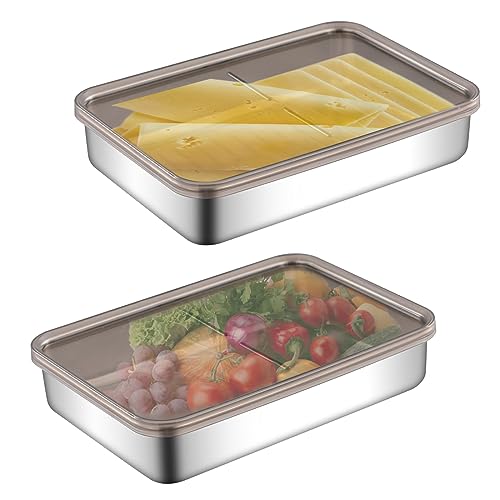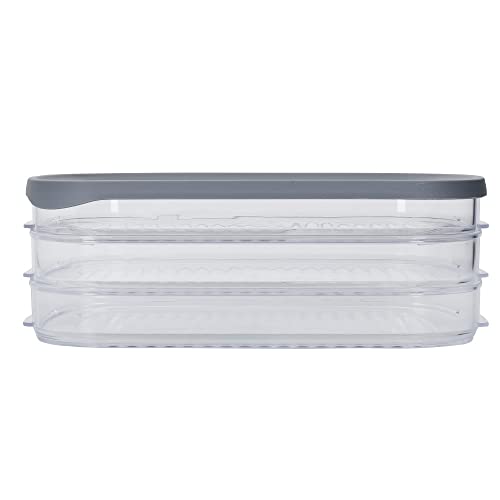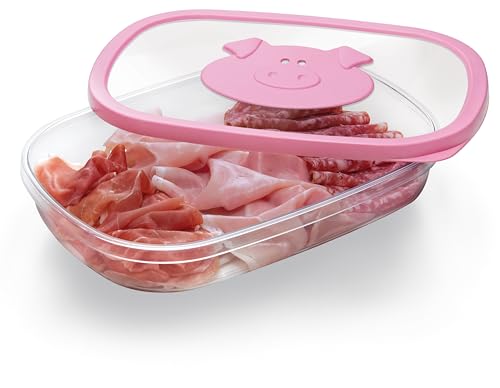Understanding Cold Meat Containers: What Are They and Why Do We Need Them?
What is a Cold Meat Container?
Cold meat containers are specialised storage solutions designed to keep cured and cooked meats fresh while preventing spoilage. These containers make it easy for us to store meat products like ham, turkey, or salami in a way that maintains their flavour and texture. By providing a controlled environment, they help reduce exposure to air and moisture, which can cause meats to dry out or go bad. Essentially, they’re a practical way of ensuring we enjoy our favourite meats at their best.
Why Use a Cold Meat Container?
Using a cold meat container is essential for anyone who values the taste and quality of their food. When we leave cold meats in regular storage, they can lose their freshness faster due to bacteria growth or oxidation. Cold meat containers often come with airtight seals and made from materials that resist odours, which keeps our meats tasting just as delicious as the day we bought them. Not only do they aid in food preservation, but they also create an organised and visually appealing way to store meats in our fridge or freezer.
Key Features to Look for in a Cold Meat Container
Material Quality Matters
When selecting a cold meat container, pay attention to the material. High-quality containers are typically made from BPA-free plastics or glass, both of which are safe for food storage. Plastic containers are lightweight and often come with a range of options for sizes and styles, while glass tends to be more durable and is less permeable to odours and stains. Choosing the right material can significantly influence how long our meats stay fresh.
Airtight Seals are Essential
An effective cold meat container should come with airtight seals. This feature is crucial as it prevents air from entering the container, which can lead to freezer burn or drying out the meat. Look for containers with durable, well-fitting lids that ensure no air can penetrate. An airtight seal not only preserves flavour but also keeps our meats safe from unwanted smells and contamination.
Space Efficient Design
Consider how the container fits into your storage space at home. Opt for containers that are stackable or have a design that maximises the use of space in your fridge or freezer. This organisation can save us time when we are looking for specific meats and helps us avoid clutter, making meal preparation simpler and more efficient.
Versatile Sizes and Shapes
Cold meat containers come in various sizes and shapes to accommodate different types of meats, from large hams to small slices of deli meat. Choosing a set that offers various sizes ensures you’ll have the right container for any occasion. Versatile shapes can also make them more suitable for other storage needs beyond just cold meats.
Best Practices for Storing Cold Meats: Maximising Freshness and Taste
Temperature Control
For optimal freshness, keep our cold meats stored in the fridge rather than out on the counter. Ideally, the fridge should be set to temperatures below 4°C. This not only slows down bacteria growth but retains the moisture within the meats, ensuring they remain juicy and tasty. If we’re not consuming the meats within a few days, consider freezing them to extend their shelf life.
Proper Organisation
To ensure we always know what we have on hand, it’s important to organise our cold meat containers neatly in the refrigerator. Labeling containers and using a first-in-first-out system can help us keep track of what needs to be consumed sooner. By doing so, we can avoid waste and enjoy our meats at their peak freshness.
Avoid Cross-Contamination
Take care to avoid cross-contamination by storing different types of meats separately. This means using different containers for different products to prevent flavours from mingling or introducing bacteria. Using our cold meat containers wisely helps to maintain the integrity of the individual meats, ensuring they taste exactly as intended.
Our Top Picks: Recommended Cold Meat Containers for Every Kitchen
Budget-Friendly Options
For those who are looking for affordable yet effective solutions, we recommend considering plastic containers with airtight lids. These options are not only cost-effective but also lightweight and easy to handle. Many of these containers are stackable, which makes them perfect for smaller kitchens.
Premium Glass Containers
If you’re willing to invest a bit more for quality, glass containers with silicone seals provide a fantastic option. These containers are durable and can handle both refrigerator and freezer temperatures. Plus, they do an excellent job of maintaining our meats’ aroma and taste, making them well worth the investment.
Multi-Functional Sets
For the best versatility, some cold meat container sets come with a variety of sizes and may even include additional storing options for other foods. Look for sets that have everything from large containers for whole hams to smaller ones perfect for sliced meats. This approach can streamline our kitchen storage considerably.
Tips for Maintaining Your Cold Meat Container for Longevity
Regular Cleaning
To keep our cold meat containers in top condition, it’s essential to clean them regularly. Use mild soap and warm water to wash them, avoiding harsh chemicals that can cling to the surface. For plastic containers, consider checking for scratches or wear that could harbour bacteria.
Inspect Seals for Effectiveness
Pay attention to the seals on our containers. Over time, these can wear out or lose their effectiveness. If we notice any tears or gaps, it’s time to replace the lid or the entire container. Ensuring that the seals are in good condition is crucial in maintaining the performance of our cold meat containers.
Avoid Extreme Temperature Changes
When using cold meat containers, it’s best to avoid drastic temperature shifts. For example, don’t take a frozen container directly from the freezer to the warm kitchen. Allow it to acclimatise gradually to prevent cracking and extending the lifespan of the storage solution.






















